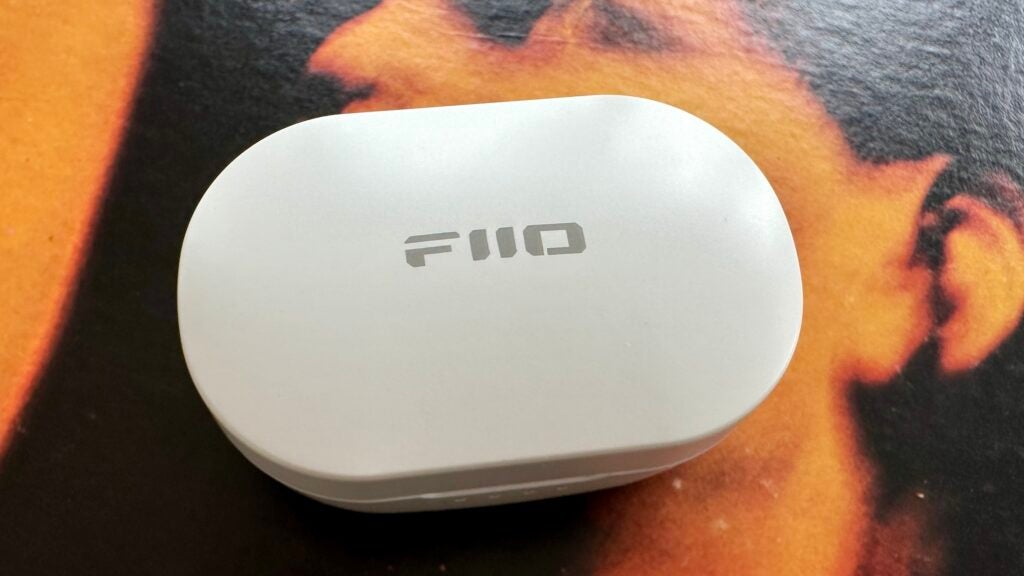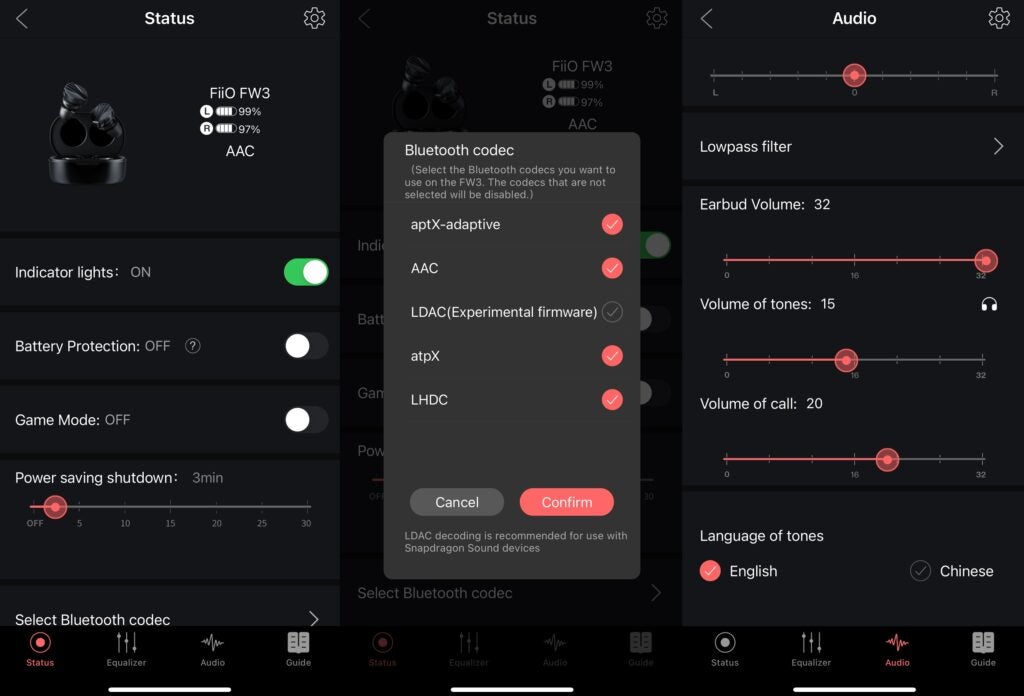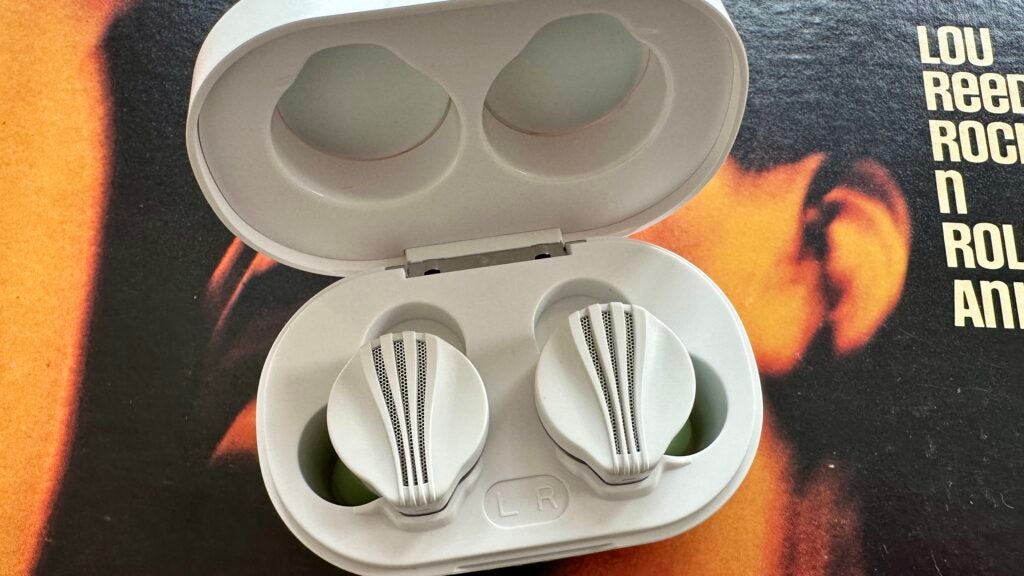Verdict
There’s plenty to enjoy about the FiiO FW3, from the way they look to the sky-high detail levels of their sound. But their sonic balance isn’t all it might be, and they’re the first TWS I’ve heard in who knows how long that have imperfect wireless connectivity.
Pros
- Detailed, open and informative sound
- Good specification
- Individual looks
Cons
- Sorely lacking bass presence and overall dynamism
- Inconvenient physical controls
- Prone to drop-outs
Introduction
For those who haven’t been paying attention, and for the avoidance of doubt: FiiO is deadly serious.
Its ever-expanding range of digital audio players, desktop amps/DACs and, lately, headphones have all impressed to a lesser or greater extent and all sport eye-catching prices when compared to similarly specified rivals.
Ordinarily, the sight of yet another pair of reasonably affordable true wireless in-ear headphones wouldn’t be all that exciting – but this is FiiO. What has the Chinese specialist managed to deliver for less than a ton this time?
Availability
The FiiO FW3 true wireless in-ear headphones are on sale in the United Kingdom they cost no more than £95 per pair. In America they sell for $99. No price has been confirmed for Australia just yet, but if today’s exchange rates are anything to go by you’re looking at AU$189 or something quite like it.
In the interests of both brevity and sanity, I won’t list all the very many pairs of true wireless in-ear headphones, from all the very many different brands, that you can buy for this sort of money. Some of them are excellent, some of them are rotten – but they are all competitors to the FW3, and will all have to be bested if these FiiO are going to make it to the top of your shortlist…
Design
- White or grey finishes
- 6g per earbud
- Distinctive looks
Ordinarily, the conversation about the design (or otherwise) of a pair of true wireless earbuds is limited to whether or not they’re the Apple-tastic dangly stem design or not. So FiiO is to be congratulated on serving up a pair of TWS that genuinely don’t look like anyone else’s. Whether or not you’re into the remarkable ‘oystershell-meets-Asian-car-manufacturer-logo’ loom is entirely a question of taste.

The earbuds are a trim 6g each, and thanks to the six-strong selection of ear-tips in the packaging should be simple enough to fit both securely and comfortably. There’s a fair bit more earbud happening outside the wearer’s ear than is usual, but as long as you enjoy the design that’s almost certainly a good thing.
The charging case is, like the earbuds, made of unremarkable plastic and is, at 45g, decently lightweight. Unlike the earbuds, though, it’s utterly bland in its design – it’s a smooth little pebble, and if it wasn’t for the quite assertive FiiO branding on the lid it could be by any manufacturer you care to mention. It has a useful little row of LEDs on the front to indicate charging level, and a USB-C input on the back to do the actual charging.

Features
- 10mm full-range carbon drivers
- Bluetooth 5.2
- 21 hours battery life (total)
Not for the first time where one of its products is concerned, FiiO has specified the FW3 rather more extravagantly than the asking price would suggest.
For instance, the FW3 use Bluetooth 5.2 for wireless connectivity, and are compatible with SBC, AAC, aptX, aptX Adaptive and LHDC codecs with LDAC at the beta stage at the time of writing.
Once the audio information is on board, it’s pored over by a highly capable AKM Velvet Sound’s AK4332 digital-to-analogue convertor chipset – which means if you’ve some appropriately chunky audio files available, and you use an LHDC-capable source player, the FW3 are ready to support 24-bit/96kHz playback. And by way of an encore, they’re Snapdragon Sound-certified too.

Getting the decoded sound to you is the responsibility of a couple of 10mm carbon-based full-range dynamic drivers. FiiO is claiming a frequency response of 20Hz – 20kHz, and suggests the use of the carbon-based material for the driver diaphragm offers superior transient response and exceptional resolution.
All of these claimed sonic advantages can be enjoyed for seven hours at a time – that’s the amount of charge stored in the earbuds. There are a couple of full charges held in the case, giving an OK-but-nothing-special all-in total of 21 hours between visits to mains power. There’s no wireless charging here, and from flat to full takes around 100 minutes.
There are no touch-controls on these earbuds. Instead, FiiO has fitted each with a couple physical push controls that take care of power on/off, play/pause, volume up/down, skip forwards/backwards, answer/end/reject call, summon voice assistant and, rather disturbingly, reset. They’re quite positive in their action, but positioning them on the top edge of what are quite large earbuds means putting your finger inside your pinna – or, at least it does in my case. Perhaps my ears are unusual, but no one’s mentioned it before…
There’s a mic in each earbud, which takes care of telephony and voice-assistant interaction. In both cases, intelligibility seems fine – so it’s easy to have a conversation and/or to control your FW3 simply by speaking.

You can also exert a bit of influence using the FiiO Control app that’s free for iOS and Android. There are no playback controls here, admittedly – but what there is proves useful, and the app itself is clear and stable. It gives you an indication of battery life, confirmation of the codec selected (plus the ability to disable any or all of the codecs the FW3 are compatible with), and select how long you’d like the earbuds to stay powered up while they’re inactive.
You can turn the LED on each earbud on or off, select Battery Protection (switch it on and the battery will only ever charge to 85% capacity) and turn Game mode on or off. There’s a 10-band equaliser, allowing you quite a lot of influence on the sound, and a control to set a maximum volume level. There’s even a Balance control, which is something you don’t see every day.
Sound Quality
- Detailed, eloquent and spacious sound
- Lacking in bass presence
- Prone to drop-outs
All in-ear headphones, wired or wireless, depend on the quality of their fit when it comes to sound quality – and the FiiO FW3 are no different. In fact, they’re one of the most fit-dependent pairs of in-ear headphones I’ve ever heard – and I’ve heard my fair share.
So it’s worth taking just a little time to make sure you’ve got the most appropriate ear-tips attached, and that you’ve mastered the twist and lock fitment method before you rush to judge. Because it’s easier to do these true wireless in-ears a disservice than it is with almost any alternative.
Once they’re properly positioned, there are aspects of the FW3 sound that are uncomplicatedly enjoyable. With a 16-bit/44.1kHz file of Handsworth Revolution by Steel Pulse aboard, there’s plenty of detail available throughout the frequency range and a nice sensation of unity to the presentation. Integration of the frequency range is nice and even from top to bottom, and the soundstage the FW3 create is reasonably spacious and properly defined.

The top of the frequency has good extension and plenty of substance to balance the nice levels of bite and attack that treble sounds enjoy. There’s shine to the top end, but it’s never hard or edgy – even at significant volume. Detail levels are high here, as they are everywhere, and the low-level harmonic variations that some less capable designs ignore are given due prominence by the FiiO.
The midrange, too, is informative and quite explicit. Certainly vocalists of every competence are given full expression, and the amount of space the FW3 afford them on the soundstage means there’s no hiding-place when it comes to character, commitment or emotional condition. No matter if it’s the close-mic’d intimacies of Nick Drake’s Which Will as a 24-bit/96kHz file or the ranting on two chords of I am a Poseur by X-Ray Spex via Spotify, the FiiO communicate freely.
The bottom of the frequency range is a little more problematic, though. FiiO’s claims for extension down to 20Hz seem optimistic in the extreme, and the low-frequency presence the FW3 create is tentative and altogether too polite. There’s a profound shortage of punch and drive to the way these earbuds deal with bass sounds, and while the low-end stuff they describe is just as detailed as the rest of the frequency range it’s sorely lacking in animation. There’s something quite matter-of-fact about the way the FiiO handle the lower frequencies that saps rhythms of energy and drive.

And this isn’t helped in the slightest by the FW3s’ lack of dynamic impetus. Everything that occurs in a recording, according to the FiiO, occurs at a set level of intensity and doesn’t deviate from there – not ever. The result, again, is a presentation that’s short of animation and excitement – and the FW3 are an unengaging listen as a result.
The other major problem here has nothing to do with the way the FW3 sound. The wireless connection between the two earbuds isn’t perfect – in fact, one or other of the earbuds will very briefly crackle or drop out as a matter of routine. It’s not unlike the disruption that occurs if you wander out of range of your source player, except that it happens here when your smartphone or what-have-you is right next to you.
Latest deals
Should you buy it?
You enjoy a strong aesthetic: FiiO hasn’t shied away from trying to make the FW3 distinctive.
You enjoy bass-centric music: It’s safe to say the FW3 do not.
Final Thoughts
You can’t hit the bull’s-eye every time, of course, but I admit I had started to think FiiO might be the exception to the rule. So I suppose it’s good, in some ways at least, that the FW3 aren’t the market-disrupting bargain so many FiiO products are. That doesn’t mean I’m not disappointed though, obviously…
How we test
We test every set of headphones we review thoroughly over an extended period of time. We use industry standard tests to compare features properly. We’ll always tell you what we find. We never, ever, accept money to review a product.
Find out more about how we test in our ethics policy
Verdict
There’s plenty to enjoy about the FiiO FW3, from the way they look to the sky-high detail levels of their sound. But their sonic balance isn’t all it might be, and they’re the first TWS I’ve heard in who knows how long that have imperfect wireless connectivity.
Pros
- Detailed, open and informative sound
- Good specification
- Individual looks
Cons
- Sorely lacking bass presence and overall dynamism
- Inconvenient physical controls
- Prone to drop-outs
Introduction
For those who haven’t been paying attention, and for the avoidance of doubt: FiiO is deadly serious.
Its ever-expanding range of digital audio players, desktop amps/DACs and, lately, headphones have all impressed to a lesser or greater extent and all sport eye-catching prices when compared to similarly specified rivals.
Ordinarily, the sight of yet another pair of reasonably affordable true wireless in-ear headphones wouldn’t be all that exciting – but this is FiiO. What has the Chinese specialist managed to deliver for less than a ton this time?
Availability
The FiiO FW3 true wireless in-ear headphones are on sale in the United Kingdom they cost no more than £95 per pair. In America they sell for $99. No price has been confirmed for Australia just yet, but if today’s exchange rates are anything to go by you’re looking at AU$189 or something quite like it.
In the interests of both brevity and sanity, I won’t list all the very many pairs of true wireless in-ear headphones, from all the very many different brands, that you can buy for this sort of money. Some of them are excellent, some of them are rotten – but they are all competitors to the FW3, and will all have to be bested if these FiiO are going to make it to the top of your shortlist…
Design
- White or grey finishes
- 6g per earbud
- Distinctive looks
Ordinarily, the conversation about the design (or otherwise) of a pair of true wireless earbuds is limited to whether or not they’re the Apple-tastic dangly stem design or not. So FiiO is to be congratulated on serving up a pair of TWS that genuinely don’t look like anyone else’s. Whether or not you’re into the remarkable ‘oystershell-meets-Asian-car-manufacturer-logo’ loom is entirely a question of taste.

The earbuds are a trim 6g each, and thanks to the six-strong selection of ear-tips in the packaging should be simple enough to fit both securely and comfortably. There’s a fair bit more earbud happening outside the wearer’s ear than is usual, but as long as you enjoy the design that’s almost certainly a good thing.
The charging case is, like the earbuds, made of unremarkable plastic and is, at 45g, decently lightweight. Unlike the earbuds, though, it’s utterly bland in its design – it’s a smooth little pebble, and if it wasn’t for the quite assertive FiiO branding on the lid it could be by any manufacturer you care to mention. It has a useful little row of LEDs on the front to indicate charging level, and a USB-C input on the back to do the actual charging.

Features
- 10mm full-range carbon drivers
- Bluetooth 5.2
- 21 hours battery life (total)
Not for the first time where one of its products is concerned, FiiO has specified the FW3 rather more extravagantly than the asking price would suggest.
For instance, the FW3 use Bluetooth 5.2 for wireless connectivity, and are compatible with SBC, AAC, aptX, aptX Adaptive and LHDC codecs with LDAC at the beta stage at the time of writing.
Once the audio information is on board, it’s pored over by a highly capable AKM Velvet Sound’s AK4332 digital-to-analogue convertor chipset – which means if you’ve some appropriately chunky audio files available, and you use an LHDC-capable source player, the FW3 are ready to support 24-bit/96kHz playback. And by way of an encore, they’re Snapdragon Sound-certified too.

Getting the decoded sound to you is the responsibility of a couple of 10mm carbon-based full-range dynamic drivers. FiiO is claiming a frequency response of 20Hz – 20kHz, and suggests the use of the carbon-based material for the driver diaphragm offers superior transient response and exceptional resolution.
All of these claimed sonic advantages can be enjoyed for seven hours at a time – that’s the amount of charge stored in the earbuds. There are a couple of full charges held in the case, giving an OK-but-nothing-special all-in total of 21 hours between visits to mains power. There’s no wireless charging here, and from flat to full takes around 100 minutes.
There are no touch-controls on these earbuds. Instead, FiiO has fitted each with a couple physical push controls that take care of power on/off, play/pause, volume up/down, skip forwards/backwards, answer/end/reject call, summon voice assistant and, rather disturbingly, reset. They’re quite positive in their action, but positioning them on the top edge of what are quite large earbuds means putting your finger inside your pinna – or, at least it does in my case. Perhaps my ears are unusual, but no one’s mentioned it before…
There’s a mic in each earbud, which takes care of telephony and voice-assistant interaction. In both cases, intelligibility seems fine – so it’s easy to have a conversation and/or to control your FW3 simply by speaking.

You can also exert a bit of influence using the FiiO Control app that’s free for iOS and Android. There are no playback controls here, admittedly – but what there is proves useful, and the app itself is clear and stable. It gives you an indication of battery life, confirmation of the codec selected (plus the ability to disable any or all of the codecs the FW3 are compatible with), and select how long you’d like the earbuds to stay powered up while they’re inactive.
You can turn the LED on each earbud on or off, select Battery Protection (switch it on and the battery will only ever charge to 85% capacity) and turn Game mode on or off. There’s a 10-band equaliser, allowing you quite a lot of influence on the sound, and a control to set a maximum volume level. There’s even a Balance control, which is something you don’t see every day.
Sound Quality
- Detailed, eloquent and spacious sound
- Lacking in bass presence
- Prone to drop-outs
All in-ear headphones, wired or wireless, depend on the quality of their fit when it comes to sound quality – and the FiiO FW3 are no different. In fact, they’re one of the most fit-dependent pairs of in-ear headphones I’ve ever heard – and I’ve heard my fair share.
So it’s worth taking just a little time to make sure you’ve got the most appropriate ear-tips attached, and that you’ve mastered the twist and lock fitment method before you rush to judge. Because it’s easier to do these true wireless in-ears a disservice than it is with almost any alternative.
Once they’re properly positioned, there are aspects of the FW3 sound that are uncomplicatedly enjoyable. With a 16-bit/44.1kHz file of Handsworth Revolution by Steel Pulse aboard, there’s plenty of detail available throughout the frequency range and a nice sensation of unity to the presentation. Integration of the frequency range is nice and even from top to bottom, and the soundstage the FW3 create is reasonably spacious and properly defined.

The top of the frequency has good extension and plenty of substance to balance the nice levels of bite and attack that treble sounds enjoy. There’s shine to the top end, but it’s never hard or edgy – even at significant volume. Detail levels are high here, as they are everywhere, and the low-level harmonic variations that some less capable designs ignore are given due prominence by the FiiO.
The midrange, too, is informative and quite explicit. Certainly vocalists of every competence are given full expression, and the amount of space the FW3 afford them on the soundstage means there’s no hiding-place when it comes to character, commitment or emotional condition. No matter if it’s the close-mic’d intimacies of Nick Drake’s Which Will as a 24-bit/96kHz file or the ranting on two chords of I am a Poseur by X-Ray Spex via Spotify, the FiiO communicate freely.
The bottom of the frequency range is a little more problematic, though. FiiO’s claims for extension down to 20Hz seem optimistic in the extreme, and the low-frequency presence the FW3 create is tentative and altogether too polite. There’s a profound shortage of punch and drive to the way these earbuds deal with bass sounds, and while the low-end stuff they describe is just as detailed as the rest of the frequency range it’s sorely lacking in animation. There’s something quite matter-of-fact about the way the FiiO handle the lower frequencies that saps rhythms of energy and drive.

And this isn’t helped in the slightest by the FW3s’ lack of dynamic impetus. Everything that occurs in a recording, according to the FiiO, occurs at a set level of intensity and doesn’t deviate from there – not ever. The result, again, is a presentation that’s short of animation and excitement – and the FW3 are an unengaging listen as a result.
The other major problem here has nothing to do with the way the FW3 sound. The wireless connection between the two earbuds isn’t perfect – in fact, one or other of the earbuds will very briefly crackle or drop out as a matter of routine. It’s not unlike the disruption that occurs if you wander out of range of your source player, except that it happens here when your smartphone or what-have-you is right next to you.
Latest deals
Should you buy it?
You enjoy a strong aesthetic: FiiO hasn’t shied away from trying to make the FW3 distinctive.
You enjoy bass-centric music: It’s safe to say the FW3 do not.
Final Thoughts
You can’t hit the bull’s-eye every time, of course, but I admit I had started to think FiiO might be the exception to the rule. So I suppose it’s good, in some ways at least, that the FW3 aren’t the market-disrupting bargain so many FiiO products are. That doesn’t mean I’m not disappointed though, obviously…
How we test
We test every set of headphones we review thoroughly over an extended period of time. We use industry standard tests to compare features properly. We’ll always tell you what we find. We never, ever, accept money to review a product.
Find out more about how we test in our ethics policy

























